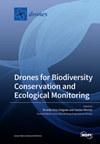Development of a Real-Time Vespa velutina Nest Detection and Notification System Using Artificial Intelligence in Drones
IF 4.4
2区 地球科学
Q1 REMOTE SENSING
引用次数: 0
Abstract
Vespa velutina is an ecosystem disruptor that causes annual damage worth KRW 170 billion (USD 137 million) to the South Korean beekeeping industry. Due to its strong fertility and high-lying habitat, it is difficult to control. This study aimed to develop a system for the control of V. velutina nests using drones for detection and tracking the real-time location of the nests. Vespa velutina nest image data were acquired in Buan-gun and Wanju-gun (Jeollabuk-do), and artificial intelligence learning was conducted using YOLO-v5. Drone image resolutions of 640, 1280, 1920, and 3840 pixels were compared and analyzed. The 3840-pixel resolution model was selected, as it had no false detections for the verification image and showed the best detection performance, with a precision of 100%, recall of 92.5%, accuracy of 99.7%, and an F1 score of 96.1%. A computer (Jetson Xavier), real-time kinematics module, long-term evolution modem, and camera were installed on the drone to acquire real-time location data and images. Vespa velutina nest detection and location data were delivered to the user via artificial intelligence analysis. Utilizing a drone flight speed of 1 m/s and maintaining an altitude of 25 m, flight experiments were conducted near Gyeongcheon-myeon, Wanju-gun, Jeollabuk-do. A total of four V. velutina nests were successfully located. Further research is needed on the detection accuracy of artificial intelligence in relation to objects that require altitude-dependent variations in drone-assisted exploration. Moreover, the potential applicability of these research findings to diverse domains is of interest.基于人工智能的无人机小黄蜂巢穴实时检测与通知系统的开发
小黄蜂是一种生态系统破坏者,每年给韩国养蜂业造成1700亿韩元(1.37亿美元)的损失。由于其繁殖力强,生境高,控制难度大。本研究旨在开发一种利用无人机检测和跟踪巢穴实时位置的控制系统。在全北扶安郡和完州郡采集绒斑小黄蜂巢图像数据,使用YOLO-v5进行人工智能学习。对比分析了640、1280、1920和3840像素的无人机图像分辨率。选择3840像素分辨率模型,因为该模型对验证图像没有误检,检测性能最好,准确率为100%,召回率为92.5%,准确率为99.7%,F1分数为96.1%。在无人机上安装了计算机(Jetson Xavier)、实时运动学模块、长期进化调制解调器和摄像头,以获取实时位置数据和图像。通过人工智能分析,将绒斑黄蜂巢穴检测和定位数据传递给用户。无人机的飞行速度为1米/秒,飞行高度为25米,在全北完州郡庆川面附近进行了飞行试验。共成功定位了4个绒斑蝽巢。在无人机辅助探测中,人工智能对需要高度相关变化的目标的检测精度有待进一步研究。此外,这些研究结果在不同领域的潜在适用性令人感兴趣。
本文章由计算机程序翻译,如有差异,请以英文原文为准。
求助全文
约1分钟内获得全文
求助全文

 求助内容:
求助内容: 应助结果提醒方式:
应助结果提醒方式:


